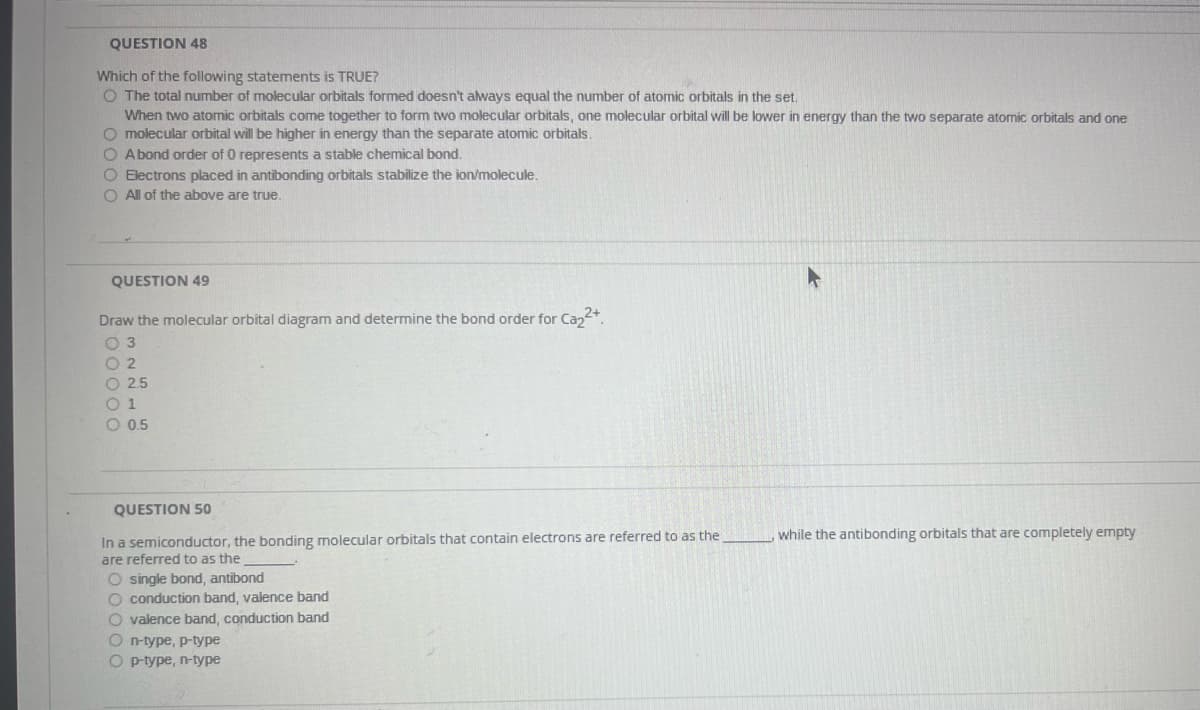QUESTION 48 Which of the following statements is TRUE? O The total number of molecular orbitals formed doesn't always equal the number of atomic orbitals in the set. When two atomic orbitals come together to form two molecular orbitals, one molecular orbital will be lower in energy than the two separate atomic orbitals and one O molecular orbital will be higher in energy than the separate atomic orbitals. O Abond order of 0 represents a stable chemical bond. O Electrons placed in antibonding orbitals stabilize the ion/molecule. O All of the above are true. QUESTION 49 Draw the molecular orbital diagram and determine the bond order for Ca₂2+ 03 02 2.5 01 O 0.5 QUESTION 50 In a semiconductor, the bonding molecular orbitals that contain electrons are referred to as the are referred to as the O single bond, antibond O conduction band, valence band O valence band, conduction band On-type, p-type Op-type, n-type while the antibonding orbitals that are completely empty
Formal Charges
Formal charges have an important role in organic chemistry since this concept helps us to know whether an atom in a molecule is neutral/bears a positive or negative charge. Even if some molecules are neutral, the atoms within that molecule need not be neutral atoms.
Polarity Of Water
In simple chemical terms, polarity refers to the separation of charges in a chemical species leading into formation of two polar ends which are positively charged end and negatively charged end. Polarity in any molecule occurs due to the differences in the electronegativities of the bonded atoms. Water, as we all know has two hydrogen atoms bonded to an oxygen atom. As oxygen is more electronegative than hydrogen thus, there exists polarity in the bonds which is why water is known as a polar solvent.
Valence Bond Theory Vbt
Valence bond theory (VBT) in simple terms explains how individual atomic orbitals with an unpaired electron each, come close to each other and overlap to form a molecular orbital giving a covalent bond. It gives a quantum mechanical approach to the formation of covalent bonds with the help of wavefunctions using attractive and repulsive energies when two atoms are brought from infinity to their internuclear distance.

Trending now
This is a popular solution!
Step by step
Solved in 3 steps









